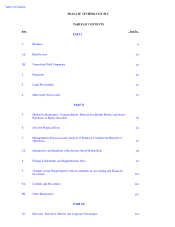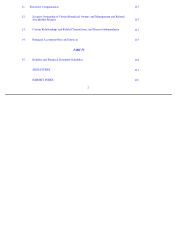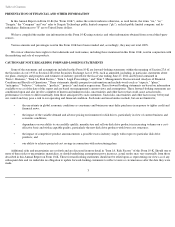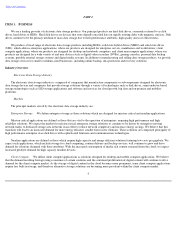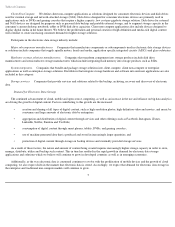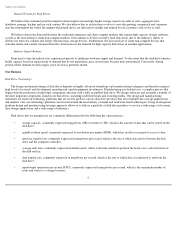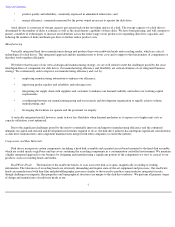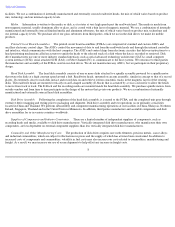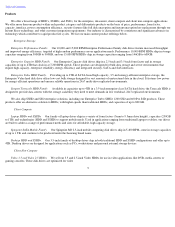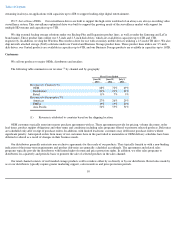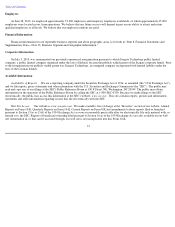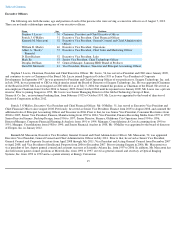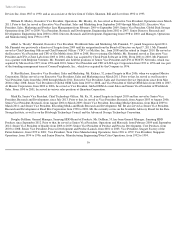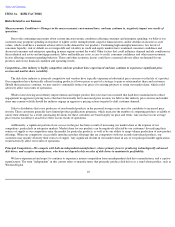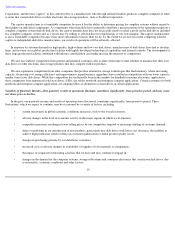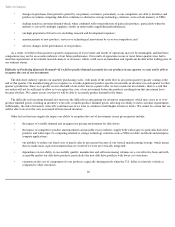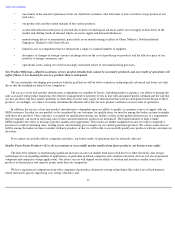Seagate 2012 Annual Report Download - page 14
Download and view the complete annual report
Please find page 14 of the 2012 Seagate annual report below. You can navigate through the pages in the report by either clicking on the pages listed below, or by using the keyword search tool below to find specific information within the annual report.
Table of Contents
In fiscal years 2013, 2012 and 2011, Dell Inc. accounted for approximately 13%, 15% and 13% of consolidated revenue, respectively, while
Hewlett-Packard Company accounted for approximately 10%, 14% and 15% of consolidated revenue, respectively. See "Item 1A. Risk
Factors—Risks Related to Our Business— Dependence on Key Customers—
We may be adversely affected by the loss of, or reduced, delayed or
canceled purchases by, one or more of our larger customers."
Competition
We compete primarily with manufacturers of hard drives used in the enterprise, client compute and client non-compute applications, but
have in the past few years also competed with manufacturers of solid-state drives. The markets that we compete in are intensely competitive.
Disk drive manufacturers not only compete for a limited number of major disk drive customers but also compete with other companies in the
electronic data storage industry that provide alternative storage solutions, such as flash memory and SSDs. Some of the principal factors used by
customers to differentiate among electronic data storage solutions manufacturers are storage capacity, product performance, product quality and
reliability, price per unit and price per gigabyte, time-to-market and time-to-
volume leadership, storage/retrieval access times, data transfer rates,
form factor, product warranty and support capabilities, supply continuity and flexibility, warranty and brand. While different markets and
customers place varying levels of emphasis on these factors, we believe that our products are competitive with respect to each of these factors in
the markets that we currently address.
Principal Disk Drive Competitors. Following industry consolidation during fiscal year 2012, three disk drive companies remain:
• Seagate, selling the Seagate and Samsung brands;
• Western Digital Corporation, operating the Western Digital and Hitachi Global Storage Technologies subsidiaries; and
• Toshiba Corporation
Other Competitors. We also are experiencing competition from companies that provide alternative storage technologies such as flash
memory and SSDs used in mobile applications such as tablets, notebooks and lower capacity hand held devices in addition to SSDs used in
enterprise applications for rapid processing and high volume transactions. Additionally, we may in the future face indirect competition from
customers who from time to time evaluate whether to offer electronic data storage products that may compete with our products.
Price Erosion. Historically, our industry has been characterized by price declines for disk drive products with comparable capacity,
performance and feature sets ("like-for-like products"). Price declines for like-for-like products ("price erosion") have been more pronounced
during periods of:
• economic contraction in which competitors may use discounted pricing to attempt to maintain or gain market share;
• few new product introductions when competitors have comparable or alternative product offerings; and
• industry supply exceeding demand.
Disk drive manufacturers typically attempt to offset price erosion with an improved mix of disk drive products characterized by higher
capacity, better performance and additional feature sets and/or product cost reductions.
Product Life Cycles and Changing Technology. Success in our industry has been dependent to a large extent on the ability to balance the
introduction and transition of new products with time-to-volume,
11


